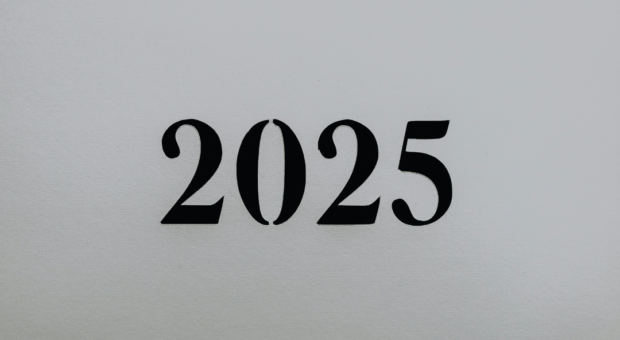
Categories:
With traditional media viewership declining, particularly among Millennials, brands and businesses are scrambling to find new ways to reach their target audience. According to Nielsen people ages 18 to 24 are spending nearly 30% less time per week watching TV than they were in 2012. The drop is 18% among those aged 24 to 35. Some are turning to social media and online ads, others to apps, and still others to influencers such as celebrities and bloggers. Just the thought of making media buying decisions in the digital age can trigger a whirlwind of questions (not to mention a stress headache or two): How do I reach a younger audience? Do I go all digital? Should I automate media planning? Can I outsource it? How do I even know if my campaign is successful?
To set your mind at ease and provide some much needed insight, we sat down with Ethos’ Media Planner, Daria Cullen, and VONT Digital Advertising Specialist, Sol Dostilio, for a discussion about these often confusing topics, and how to balance your traditional and digital media strategies.
Creating a Balanced Media Plan
How to choose a good mix: There are actually two “mixes” you may want to consider when creating a media plan. First, you will want a mix of traditional and digital media. Second, within digital media, you will want a mix of available resources.
- Traditional and Digital: Despite the changing media environment, digital and traditional media buys still complement each other well. If a campaign has a broad target audience, as well as specific, high-priority sub-groups within that audience, traditional media can be a powerful way to reach the first, while the advanced targeting strategies of digital media can help ensure the sub groups receive the attention they deserve, often at a more competitive cost.
- However, for small business without the budget for expensive traditional media buys like TV and radio, there is a huge variety of digital tactics available. Finding the right mix of those tactics is dependent on a company’s objectives.
If you are looking to generate leads, your digital media mix will depend on where in your sales funnel you want to focus:
- For businesses looking to build brand or service awareness within a particular target audience, a mix of programmatic and social video and display is the answer. Social and programmatic advertising are powerful tools to generate a lot of (targeted) impressions. Because you have such powerful targeting, you can maximize your reach (the number of unique people that are exposed to your ad) and frequency (the number of times that each person is exposed to your ad) within the target audience. This way, you’re not wasting impressions on people outside of your target audience. Curious about programmatic advertising? Get the 2-minute breakdown here!
- If you were looking to target further down the funnel, and turn interest in your brand into leads, then you’d want to create a mix that heavily incorporates search and remarketing. Here, you already have people who are interested in your brand and are ready to be converted into leads through a strong conversion action.
Benefits of a Digital Campaign
Here are just a few of the benefits of digital media and why it might be time to incorporate it into your integrated marketing plan:
Targeting.
While, in the past, the goal of media buys was to reach the masses, many companies are now seeking to narrow their scope to their own individual audience. This is the real power of digital media. In the digital media world, extraordinarily specific data is available, so you know which types of people are looking at your ads, sharing, clicking on links, and making purchases. With this data, you can select ad placement designed to reach your very specific audience, and then measure the effectiveness of that outreach so you can refine your strategies on an ongoing basis.
Efficiency.
The advanced targeting options available through digital media allow advertisers to spend their media budgets more efficiently. Through targeting, advertisers can be sure that they are only paying for impressions and clicks from their target audience.This allows advertisers to stretch their budgets and increase reach and frequency within the target audience. Digital marketing is also significantly more measurable compared to other forms of advertising. Businesses can test and learn from that measured data to determine what messages are working, and move forward based on that information.
Low Cost of Entry.
Digital is also a great option for advertisers without the large media budgets needed for traditional buys. The efficiency created through targeting allows for a smaller financial commitment. Digital campaigns can be launched with media mixes for almost any media budget.
Conversion Oriented.
Digital campaigns are perfect for businesses with clear conversion actions in mind. The tracking capabilities make it very clear which tactics and messaging deliver conversions. This makes it easier to test different platforms and ad copy to optimize the overall campaign mix based on results. A mix of traditional and digital media can also be effective in optimizing conversions. Traditional media builds awareness and interest that results in Google searches. A properly structured search campaign can take those searches and deliver conversions.
Integration.
For businesses with a goal of brand awareness, it is key for consumers to be exposed to the brand on a number of different platforms. Digital media provides incredible opportunities to reach consumers in different ways – from social media, to Google searches, news engines, and more – there is plenty of opportunity for your audience to be exposed to your brand from a multitude of platforms, within digital media alone. Digital media also has the advantage of being easily adaptable and accessible via mobile devices – a platform that has seen exponential growth over the last 10 years. Mobile digital media time in the US is now significantly greater (51%) than desktop usage (42%), making mobile friendly websites, apps, ads and search a critical piece of the media mix.
The Bottom Line
While the allure of traditional media on its own certainly isn’t over – it’s likely passed its prime. We now live in an interconnected world where at any given moment, potential clients or customers are scrolling through their phones, watching TV, clicking through Facebook, checking email and talking to colleagues – all in the span of an hour. In this day and age it is important to recognize the relationship between traditional and digital media, rather than viewing them as separate fragments. While traditional media remains a relevant brand awareness tool for some companies, implementing a digital media plan that complements and reinforces a traditional media buy can improve results (and measurement capabilities) exponentially.
About Ethos
Ethos is a multiplatform branding agency that develops and executes integrated marketing campaigns across multiple channels for companies throughout the Northeast and beyond.
At Ethos, we believe that the most effective way to set a company’s marketing course is by finding its core truth – it’s ethos. We know that once we discover and communicate that core truth, we can truly make a difference to each client’s unique marketing and business objectives.
With Ethos, you get more than a Maine marketing agency. You get a long-term partner whose goals are your goals.
Learn more about the Ethos approach and the work we’ve done for our clients. Want to have a conversation about your brand’s core truth? Contact us!

